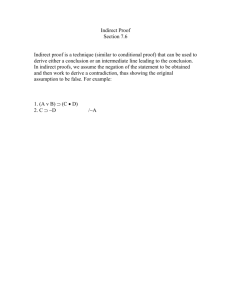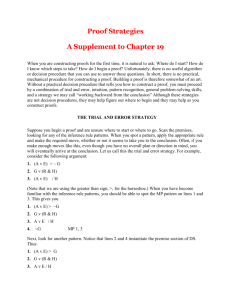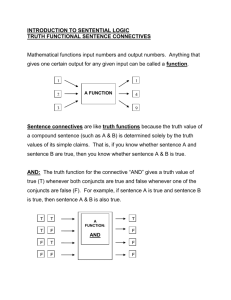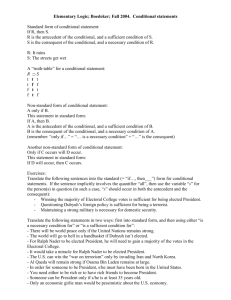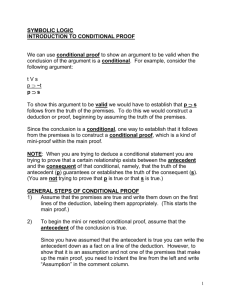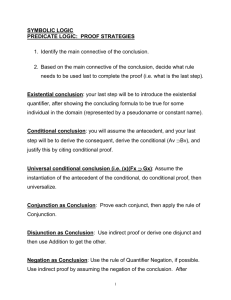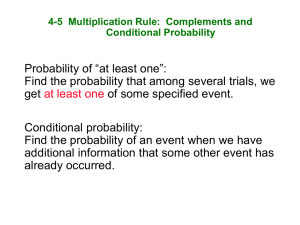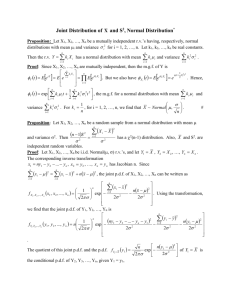7.5
advertisement
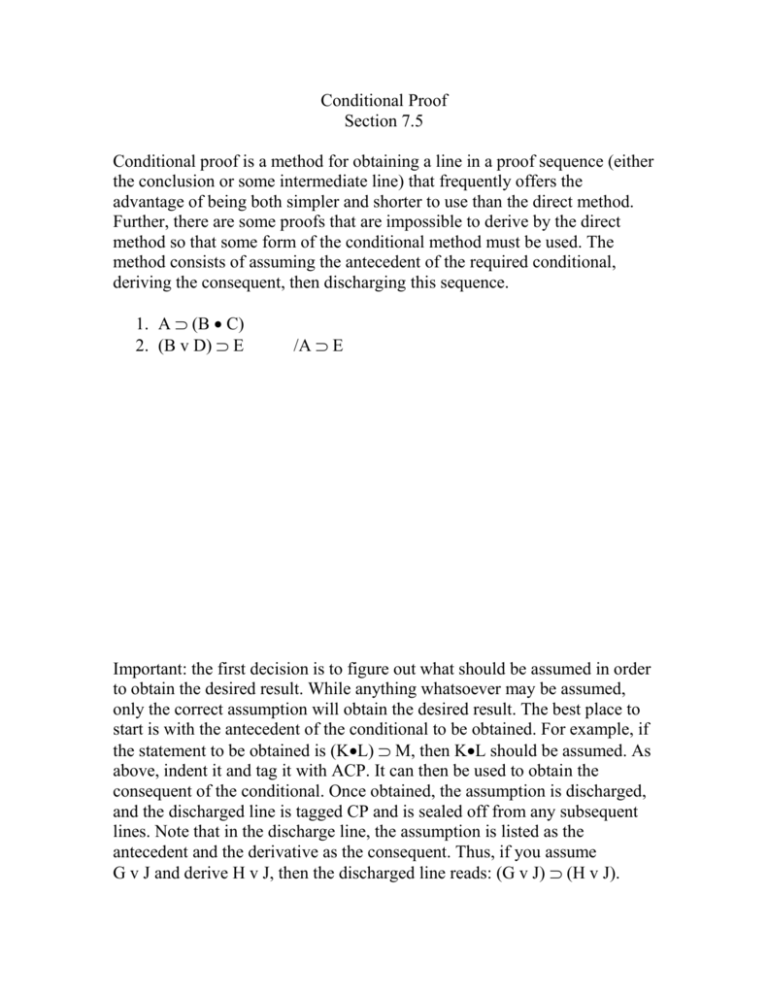
Conditional Proof Section 7.5 Conditional proof is a method for obtaining a line in a proof sequence (either the conclusion or some intermediate line) that frequently offers the advantage of being both simpler and shorter to use than the direct method. Further, there are some proofs that are impossible to derive by the direct method so that some form of the conditional method must be used. The method consists of assuming the antecedent of the required conditional, deriving the consequent, then discharging this sequence. 1. A (B C) 2. (B v D) E /A E Important: the first decision is to figure out what should be assumed in order to obtain the desired result. While anything whatsoever may be assumed, only the correct assumption will obtain the desired result. The best place to start is with the antecedent of the conditional to be obtained. For example, if the statement to be obtained is (KL) M, then KL should be assumed. As above, indent it and tag it with ACP. It can then be used to obtain the consequent of the conditional. Once obtained, the assumption is discharged, and the discharged line is tagged CP and is sealed off from any subsequent lines. Note that in the discharge line, the assumption is listed as the antecedent and the derivative as the consequent. Thus, if you assume G v J and derive H v J, then the discharged line reads: (G v J) (H v J). Conditional proof may also be used to derive a line within the scope of a proof. Consider: 1. G (H I) 2. J (K L) 3. G v J /H v K Note that the lines that are closed off from the proof are unavailable for later use. Once sealed, they are gone. They are applicable only during the assumption. Once discharged, they can no longer be used. Also note that any assumption must be discharged. 1. L [M (N v O)] 2. M ~N /L (~M v O) From the homework section: #5 1. A ~ (A v E) / A F #8 1. P (Q v R) 2. (P R) (S T) 3. Q R /T #12 1. F (G H) / (A F) (A H) #13 1. R B 2. R (B F) 3. B (F H) /RH #15 1. C (D v ~E) 2. E (D F) / C (E F) #20 1. A [B (C ~D)] 2. (B v E) (D v E) / (A B) (C E)
